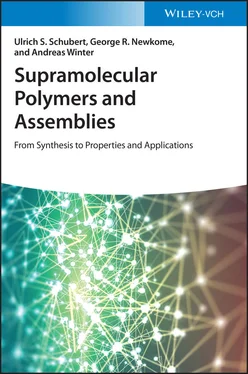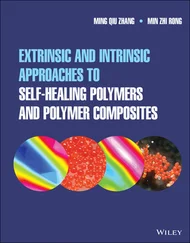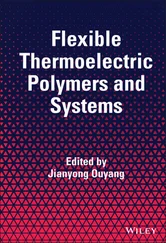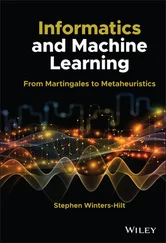
Ulrich S. Schubertwas born in Tübingen (Germany) in 1969. He studied chemistry in Frankfurt and Bayreuth (both Germany) and at the Virginia Commonwealth University, Richmond (USA). His PhD studies were performed at the Universities of Bayreuth and South Florida. After postdoctoral training with J.‐M. Lehn at the University of Strasbourg (France), he moved to the TU Munich (Germany) and obtained his Habilitation in 1999. During 1999–2000, he was Professor at the University of Munich, and during 2000–2007 Full Professor at the TU Eindhoven (the Netherlands). Since 2007, he is a Full Professor at the Friedrich Schiller University Jena, Germany. Prof. Schubert is founder and director of the Jena Center for Soft Matter (JCSM) and the Center for Energy and Environmental Chemistry Jena (CEEC Jena). He received a VICI award of the Netherland Organization for Scientific Research (NWO) and is a fellow of the ACS Division of Polymer Chemistry, Polymer Division (USA), the Royal Society of Chemistry (FRSC, UK), and the National Academy of Inventors (NAI, USA). Prof. Schubert is elected member of the German National Academy of Science and Engineering (acatech) and external scientific member of the Max‐Planck‐Gesellschaft (MPI for Colloid & Interfaces, Golm). He has currently an h‐Index of 102 and since 2014 is listed as ISI “Highly cited researcher.”
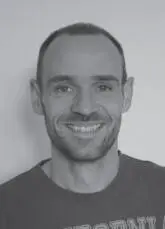
Andreas Winterwas born in Herne (Germany) in 1972 and studied chemistry at the University of Dortmund (Germany) where he graduated in organic chemistry in 1999. In 2003, he received his PhD in chemistry (University of Paderborn, Germany) for work on applications of the Mannich reaction in the synthesis of pyridine derivatives under supervision of Prof. N. Risch and stayed on as a postdoc. Subsequently, in 2005 he joined the group of Prof. U.S. Schubert at the TU Eindhoven, the Netherlands. In 2010, he moved with group from there to the Friedrich Schiller University Jena, Germany. His research is focused on the synthesis of metallo‐supramolecular assemblies for opto‐electronic and energy‐conversion applications.
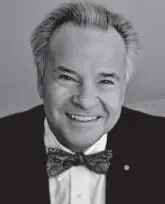
George R. Newkomereceived his BS and PhD in Chemistry from Kent State University, then joined Louisiana State University in 1968, and became a full professor in 1978, then Distinguished Research Master in 1982 and Executive Director of the LSU Center for Energy Studies. In 1986, Dr Newkome moved to the University of South Florida as their Vice President for Research and Professor of Chemistry, then President of the USF Research Foundation, and was named Distinguished Research Professor in 1992. In 1995–2000, he was the host and commentator on “Beyond Science,” a PBS TV show, and in 2000, he received an Aurora Award for Best of Shows. In 2001, he moved back to Akron, Ohio, as Vice President for Research, Dean of the Graduate School and Professor of Chemistry and Polymer Science, the Oelschlager Professor of Science and Technology at The University of Akron. In 2015, he was awarded the Docteur Honoris Causa from the University of Bordeaux, and in 2016, he was named the Distinguished Alumni Award for Kent State University. He is currently an Affiliate Research Professor in the Center for Molecular Biology and Biotechnology at Florida Atlantic University in Jupiter, Florida. He is a fellow of the AAAS, Royal Society of Chemistry, and National Academy of Inventors as well as on numerous editorial and scientific advisory boards.
1 Supramolecular Polymers: General Considerations *
1.1 Introduction
In 1920, Staudinger proposed that polymers are indeed long chains built from repeating molecular subunits (the so‐called monomer), which are linked by covalent bonds [1]. Only a few years later, Carothers developed a classification of macromolecules taking into account both types of compounds that one can polymerize and the polymerization techniques themselves [2]. About 80 years later, this classification is still contemporary and widely utilized to explain the differences between macromolecules made via different polymerization mechanisms (e.g. step‐/chain‐growth or ring‐opening polymerization [ROP]). A broad range of polymers has been prepared over the last few decades, generally following these three basic mechanisms. More recently, the actual controlled/living techniques have widened the synthetic toolbox, but nevertheless, these metathesis, ionic, and radical polymerizations obey Carothers' taxonomy.
The interactions of macromolecules on the molecular level give rise to the materials' properties on the macroscopic scale. Such secondary or non‐covalent interactions, commonly referred to as supramolecular interactions, are responsible for the programmed function of natural (e.g. DNA and enzymes) as well as synthetic polymers [3–20]. Moreover, the emerging field of supramolecular chemistry gave answers to the question if covalently linked macromolecules are necessarily required to generate polymeric materials. Considering a supramolecular polymer, i.e. a polymer whose monomeric building blocks are connected by directional and reversible non‐covalent bonds, the field of polymer chemistry is no longer limited to conventional (i.e. covalent) macromolecules. The self‐assembly of appropriate monomers via moderately strong, reversible, and highly directional non‐covalent interactions into linear polymers of high molar mass is known as supramolecular polymerization.
The field of supramolecular chemistry was pioneered by Cram, Pedersen, and Lehn, who received the Nobel prize in chemistry in 1987 for their fundamental and groundbreaking studies in this respect. Today, supramolecular chemistry also deals with the formation of larger entities that are beyond the classical molecular covalent chemistry but still involve intermolecular non‐covalent interactions [21–23]. Several types of weak interactions are known that can keep the whole assembly together: metal‐to‐ligand coordination, hydrogen‐bonding (H‐bonding), halogen‐bonding (X‐bonding), ionic interactions, π–π‐stacking interactions, and host–guest complexation. In principle, two different types of these assemblies can be distinguished: (i) supermolecules, which are well‐defined oligomeric structures and (ii) polymolecular assemblies, which consist of a large number of monomeric species. The latter could be covalent molecules, even macromolecules [24]. Therefore, it is apparently difficult to precisely define supramolecular polymers. If the only criterion is that a supramolecular polymer “consists of non‐covalently linked monomers,” polymeric micelles, even a simple crystal formed by an organic compound, would already be a “supramolecular polymer” [25]. In contrast, Meijer and coworkers coined a new definition [26, 27]: “Supramolecular polymers are defined as polymeric arrays of monomeric units that are brought together by reversible and highly directional secondary interactions, resulting in polymeric properties in dilute and concentrated solution as well as in the bulk. The directionality and strength of the supramolecular bonding are important features of systems that can be regarded as polymers and that behave according to well‐established theories of polymer physics.”
Читать дальше
